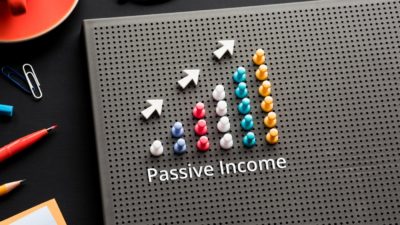Investing for your children used to be a bit of a palaver, with parents typically having to use a thing called a bare trust to house their investments. Then 2005 saw the introduction of the Child Trust Fund, which gave a significant boost to the practice of saving for children.
It was all simplified further when the Child Trust Fund was replaced by the Junior ISA in 2011. The initial annual limit was set at £3,600, and that’s since risen to today’s £4,128 per year. Just about any UK resident aged under 18 can have one, providing they do not have a Child Trust Fund.
Those who do have a Child Trust Fund can continue to contribute to that if they wish, though since 2015 it has been possible to convert this into a Junior ISA, and I’d say that’s definitely the way to go.
Passive income stocks: our picks
Do you like the idea of dividend income?
The prospect of investing in a company just once, then sitting back and watching as it potentially pays a dividend out over and over?
If you’re excited by the thought of regular passive income payments, as well as the potential for significant growth on your initial investment…
Then we think you’ll want to see this report inside Motley Fool Share Advisor — ‘5 Essential Stocks For Passive Income Seekers’.
What’s more, today we’re giving away one of these stock picks, absolutely free!
Anything up to the maximum limit can be invested every year, but money cannot be withdrawn until the holder reaches the age of 18 — except in cases of death or terminal illness. Once the child reaches 18, their Junior ISA converts into an adult ISA with a much higher annual contribution limit — currently £20,000 per year.
Cash or shares?
Just like a regular adult one, Junior ISAs exist in both cash and stocks & shares versions. I’ve explained recently why I reckon a cash ISA is a bad idea, with many of them struggling to even match inflation. For children I think a cash option is even worse — because they potentially have far more time available for the likely superior returns from investing in shares to weave their magic.
Pior to the Junior ISA, parents were somewhat limited in the amount they could give to their children, with any returns generated on gifted money being limited to £100 per parent per year under the child’s tax allowance. Anything over the £100 was taxed at the parent’s tax rate, with the rule intended to prevent less scrupulous parents stashing away their own money in their kids’ names to try to benefit from the offspring’s tax allowances.
But why do you need to worry about keeping your children’s cash safe from tax, when they’re unlikely to be paying tax anyway? Children have their own tax allowances, and without any earnings they’d need to have some seriously impressive money stashed away to get enough interest to pay tax on.
No tax, ever
The big advantage is that all the money they accumulate in their formative 18 years, and any future returns on it, remains tax-free for the rest of their lives after it converts to an adult ISA. And it could be a substantial amount.
Suppose your child has the full £4,128 invested every year until age 18 — it should rise in line with inflation, but I’ll stick to 2018 money here. If their investment in shares achieves a 6% total return each year (which I certainly see as feasible) and all dividend cash is reinvested, they’ll reach adulthood with nearly £132,000.
It’s like adding £132,000 to their first adult ISA allowance of £20,000, and what a start to adult life that would be. I’ve previously shown how you could become an ISA millionaire in 20 years, and it would be a lot easier with an initial boost like that.







